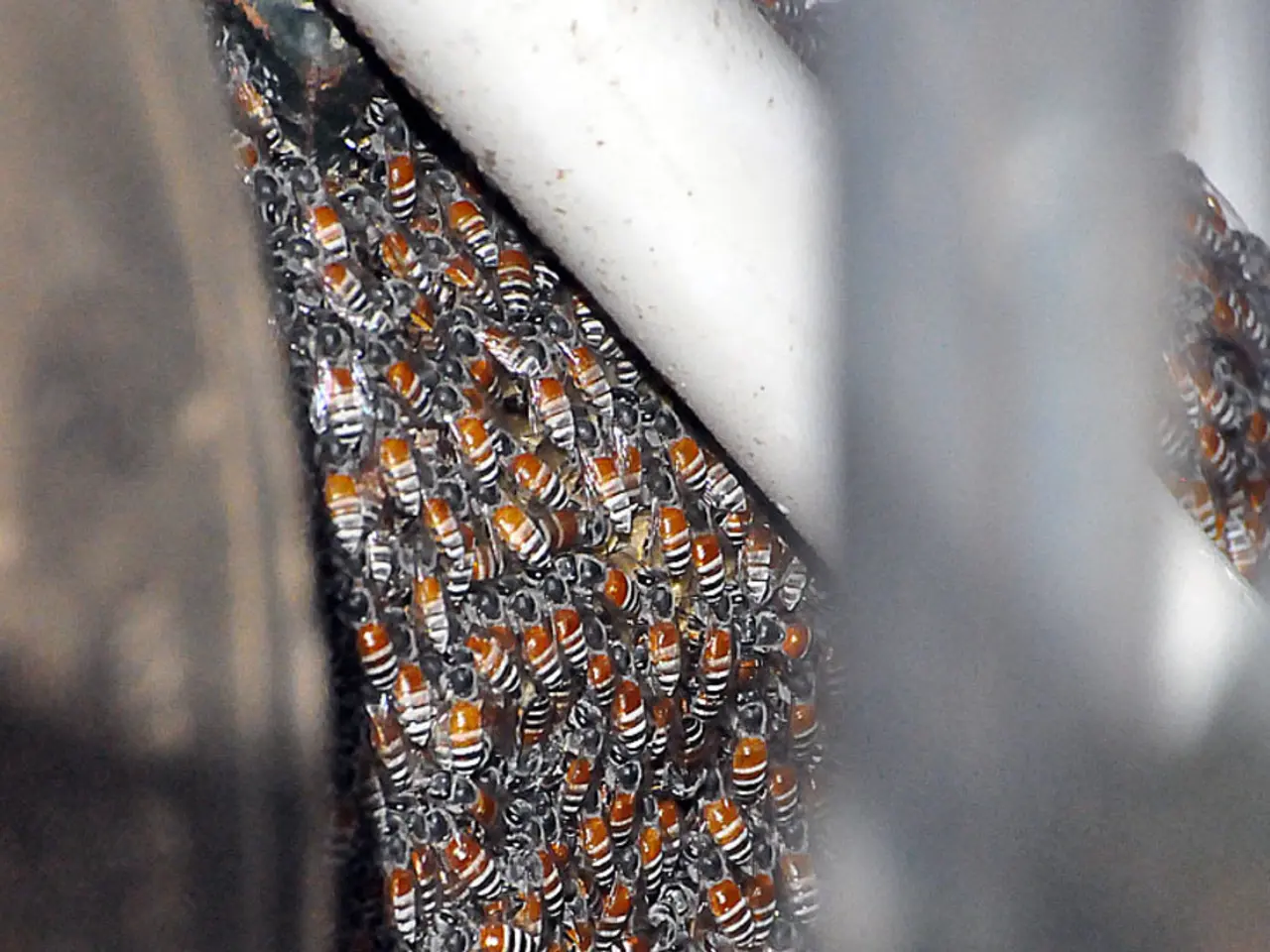Replacing Disease with Wellness: Cell Swaps Suggest New Approaches for Huntington's Treatments
In a groundbreaking study published in Nature Biotechnology, researchers have discovered that young and healthy glial cells can outcompete older and sick glial cells in the central nervous system (CNS), potentially paving the way for new treatments for various neurological and psychiatric disorders.
The study, led by Steve Goldman, MD, PhD, co-director of the Center for Translational Neuromedicine at the University of Rochester, describes the competitive advantage of these young and healthy cells over their aged and diseased counterparts.
The research, which was supported by the Novo Nordisk Foundation, the Lundbeck Foundation, the Olav Thon Foundation, and the Adelson Medical Research Foundation, suggests that healthy human glia can replace sick human cells in another human brain. This finding opens up the possibility of cell replacement therapies for a wide range of neurological and psychiatric disorders.
One of the key findings is that younger healthy human glial progenitors can outcompete older and otherwise healthy human glia, suggesting that cellular youth is a critical determinant of competitive success. In the striatum, for example, healthy human glial cells displaced and eliminated their Huntington's disease counterparts.
The study also reveals that a wave of migration of healthy cells can be observed, marking the border where diseased cells are dying off and being replaced by healthy ones. This migration was particularly evident when the researchers implanted human glial progenitor cells with the Huntington's disease (HTT) mutation into the brains of newborn mice, which were later replaced by healthy human glial cells.
Transplanting human glial progenitor cells with the HTT mutation impaired their function, resulting in poor astrocytes and oligodendrocytes production. However, the healthy cells that replaced them were able to restore normal glial function.
A decade of scientific progress, including strategies for producing glial support cells from embryonic stem cells and transplanting these cells into the brains of baby mice, contributed to the new findings. Human glial progenitor cells can give rise to both astrocytes and oligodendrocytes, the two major types of glia.
The study's findings support a therapeutic paradigm where promoting the survival, proliferation, or transplantation of healthy young glial cells—or enhancing their competitive advantage—could restore CNS function disrupted by aging or disease.
However, precise translation to therapies requires further research into the cellular and molecular mechanisms governing glial cell competition, immune regulation, and vascular interactions within the CNS. Current evidence underscores the potential but also reflects the complexity of CNS glial biology and its implications for neurotherapeutics.
Key therapeutic implications include cellular replacement and rejuvenation, modulation of glial cell dynamics, targeting vascular-glial interactions, neuroinflammation control, and reducing proteinopathies and cellular stress.
The study's additional authors include John Mariani, Renee Solly, Ashley Tate, Steven Schanz, Natasha Cotrupi, Abdellatif Benraiss with the medical center, and Ricardo Vieira, Gwen Huynh, Hans Stephensen, Marzieh Mousaei, and Jon Sporring with the University of Copenhagen. Goldman also holds additional positions at Sana Biotechnology and the University of Copenhagen.
[1] Reference for vascular-glial interactions [2] Reference for neuroinflammation [3] Reference for proteinopathies and cellular stress [4] Reference for ApoE genetic variants’ effects on tau pathology in glial cells
- This groundbreaking study, focusing on health-and-wellness and neurological-disorders, has unveiled that young and healthy glial cells have a competitive advantage over older and diseased ones in the central nervous system, potentially revolutionizing treatments for various medical-conditions, including chronic-diseases and mental-health issues.
- The research, supported by several foundations, has shown that healthy human glia can replace sick human cells in another human brain, opening up the possibility of cell replacement therapies for a wide range of neurological and psychiatric disorders.
- The study also suggests that cellular youth is a critical determinant of competitive success, as younger healthy human glial progenitors can outcompete older and otherwise healthy human glia, with potential implications for the treatment of neurological and psychiatric disorders.




